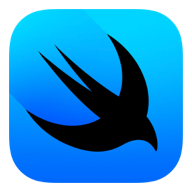Apple has consistently provided developers with powerful tools and frameworks to create exceptional applications. At the WWDC23 event, the company announced its brand-new wearable device, the Vision Pro. This mixed reality gadget functions like a spatial computer, mapping digital content onto your immediate physical surroundings and allowing the user to operate it with their hands, eyes, and voice. With the aid of Vision Pro, users can engage with digital content in a way that makes it appear to be physically present in their environment. To give a truly immersive real-time experience to the users, Vision Pro’s revolutionary design incorporates Apple silicon in a unique dual-chip design along with an ultra-high-resolution display, boasting an impressive 23 million pixels across two screens.
But what’s in it for developers? In this blog, we’ll dive into what Apple Vision Pro offers to developers and explore the myriad of possibilities it opens up for creating cutting-edge apps and experiences.
Release Date:
The headset will be released in early 2024 in the United States
Estimated Price: $3,499 (2.88 lakhs)
OS: VisionOS
SDK: The VisionOS SDK is available now for developers.
For use in apps, the Vision Pro technology offers countless possibilities. The key areas where VisionPro will have an impact on the mixed reality market are as follows:
- Entertainment
- Fitness
- Virtual Assistants
- Gaming
- Education
- Social
- Engineering
- LifeStyle
Apple is creating VisionOS apps utilizing current frameworks and tools so that developers may quickly develop and realize their ideas within the allotted time.
The basic three components for creating immersive extraordinary experiences are as follows.
Window: Your visionOS app can have one or more windows created. Traditional views and controls are included, and you can deepen your experience by incorporating 3D material. They were created using SwiftUI.
Volumes: Volumes are SwiftUI scenes that display 3D content using RealityKit or Unity. Users can view and interact with the content from any perspective, whether in the Shared Space or the Full Space of the app.
Spaces: The Shared Space is where apps open by default, and there they coexist side by side, much like numerous apps on a Mac desktop. Users can also move the two display elements- Windows and volumes in the apps. For a more immersive experience, an app has the capability to launch a special Full Space, where only the app’s content is visible. Further, the app can also utilize windows and volumes, develop unrestricted 3D content, provide a portal to another universe, or even fully immerse users within a setting inside a Full Space.
List of familiar Apple frameworks that are useful for spatial computing
SwiftUI:
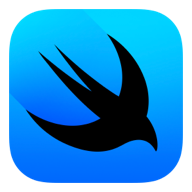
With SwiftUI, we can make stunning, dynamic apps faster than ever before and specify user interfaces for every Apple platform. SwiftUI is the best method to design a new visionOS programme or port your current iPadOS or iOS app to the platform, regardless of whether you’re generating windows, volumes, or spatial experiences. New 3D capabilities, depth, motions, effects, and immersive scene kinds are all supported.
RealityKit
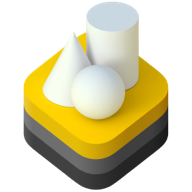
We can produce 3D content, animations, and visual effects for your app utilizing Apple’s 3D rendering engine. RealityKit can do so much more, such as throw shadows, open portals to other worlds, create spectacular visual effects, and adjust to actual lighting conditions automatically.
ARKit:
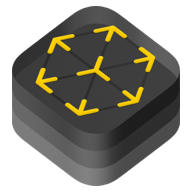
With Vision Pro, ARKit can completely comprehend a user’s surroundings, opening new opportunities for your apps to engage with the environment. When your app moves to a Full Space and requests permission, you can use powerful ARKit APIs like Plane Estimation, Scene Reconstruction, Image Anchoring, World Tracking, and Skeletal Hand Tracking. By default, ARKit powers core system capabilities that your apps automatically benefit from when they’re in the Shared Space. So wash a wall with water. Get a ball off the ground. Create memorable encounters by fusing your content with the actual world.
Accessibility:

People who like to engage with their devices only with their eyes, their voice, or a combination of the two will find VisionOS to be accessible. Additionally, Pointer Control enables users to choose their index finger, wrist, or head as an alternate pointer for content navigation if they want something else.
List of required development tools to build VisionOS apps
Xcode:

Xcode, which supports the visionOS SDK, is where development for visionOS begins. Build a brand-new app or add a visionOS target to an existing one. In Xcode Previews, refine your app. Play around with your app while exploring different room layouts and lighting options in the brand-new visionOS simulator. For your spatial content, develop tests and visualizations to investigate collisions, occlusions, and scene understanding.
Reality Composer Pro:
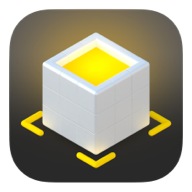
Learn about the brand-new Reality Composer Pro, created to make previewing and preparing 3D material for your visionOS apps simple. Reality Composer Pro, a tool included with Xcode, enables you to import and arrange resources including 3D models, materials, and audio. The Xcode build process is intimately integrated with it to preview and optimize your visionOS assets, which is the best part.
Unity:

Now you can adapt your current Unity-created applications for visionOS or create new apps and games using Unity’s strong and familiar authoring capabilities. Your apps can use AR Foundation and other well-known Unity capabilities, as well as all the advantages of visionOS, including passthrough and dynamically foveated rendering.
Conclusion:
Apple Vision Pro marks a pivotal moment for developers, unlocking a world of possibilities in the realm of immersive experiences.
By embracing Apple Vision Pro, developers can deliver groundbreaking experiences to captivate and delight users.
About the Author: Raviteja Aketi is a Technical Manager at Mantra Labs. He has extensive experience with B2B & B2C projects. Raviteja loves exploring new technologies, watching movies, and spending time with family and friends.
Also Read: Embarking on a Design Odyssey: Apple’s UI/UX Transformation through WWDC 2023
- SEO Powered Content & PR Distribution. Get Amplified Today.
- PlatoData.Network Vertical Generative Ai. Empower Yourself. Access Here.
- PlatoAiStream. Web3 Intelligence. Knowledge Amplified. Access Here.
- PlatoESG. Automotive / EVs, Carbon, CleanTech, Energy, Environment, Solar, Waste Management. Access Here.
- BlockOffsets. Modernizing Environmental Offset Ownership. Access Here.
- Source: https://www.mantralabsglobal.com/apple-vision-pro-whats-in-it-for-developers/
- :has
- :is
- :where
- $3
- $UP
- 2024
- 23
- 3d
- 3D Rendering
- 7
- a
- About
- accessible
- across
- actual
- adapt
- add
- Additionally
- advantages
- Aid
- All
- Allowing
- along
- also
- an
- and
- animations
- announced
- Another
- any
- APIs
- app
- appear
- Apple
- applications
- apps
- AR
- ARE
- areas
- around
- AS
- Assets
- At
- audio
- author
- authoring
- automatically
- B2B
- B2C
- ball
- basic
- BE
- before
- benefit
- BEST
- Blog
- boasting
- build
- by
- CAN
- capabilities
- capability
- captivate
- Choose
- combination
- company
- completely
- components
- Composer
- comprehend
- computer
- conditions
- content
- control
- controls
- Core
- create
- created
- Creating
- Current
- cutting-edge
- Date
- Deepen
- Default
- delight
- deliver
- depth
- Design
- desktop
- develop
- developers
- Development
- development tools
- device
- Devices
- different
- digital
- Digital Content
- Display
- do
- dynamic
- dynamically
- Early
- effects
- else
- embracing
- enables
- engage
- Engine
- Environment
- Even
- Event
- EVER
- Every
- exceptional
- existing
- experience
- Experiences
- explore
- Exploring
- extensive
- Extensive Experience
- extraordinary
- Eyes
- familiar
- family
- faster
- Find
- finger
- follows
- For
- Foundation
- foveated rendering
- frameworks
- friends
- from
- full
- fully
- functions
- further
- fusing
- Games
- generating
- get
- Give
- Ground
- groundbreaking
- hand
- hand tracking
- Hands
- Have
- he
- head
- Headset
- HTTPS
- ideas
- if
- image
- immediate
- Immerse
- immersive
- Impact
- import
- impressive
- in
- included
- Including
- incorporating
- index
- inside
- integrated
- interact
- interfaces
- into
- investigate
- iOS
- iOS app
- iPadOS
- IT
- ITS
- jpg
- Key
- Key Areas
- Labs
- launch
- Lighting
- like
- loves
- mac
- make
- MAKES
- manager
- Mantra
- Mantra Labs
- mapping
- Market
- material
- materials
- May..
- memorable
- method
- million
- mixed
- mixed reality
- models
- moment
- more
- motions
- move
- moves
- Movies
- much
- myriad
- Navigation
- New
- New technologies
- now
- numerous
- of
- off
- Offers
- on
- ONE
- only
- onto
- open
- opening
- opens
- operate
- opportunities
- Optimize
- Options
- or
- Other
- part
- passthrough
- permission
- perspective
- physical
- Physically
- pivotal
- platform
- plato
- Plato Data Intelligence
- PlatoData
- Play
- Portal
- possibilities
- powerful
- powers
- preparing
- present
- Preview
- Previews
- Pro
- process
- produce
- programme
- projects
- provide
- provided
- quickly
- Read
- real-time
- Reality
- realize
- realm
- refine
- Regardless
- released
- rendering
- requests
- required
- Resources
- revolutionary
- Room
- scene
- scenes
- screens
- sdk
- setting
- shared
- side
- Silicon
- Simple
- simulator
- So
- something
- Space
- Spatial
- special
- spectacular
- Spending
- strong
- Stunning
- such
- Supported
- Supports
- system
- Target
- Technical
- Technologies
- Technology
- tests
- than
- that
- The
- their
- There.
- they
- this
- three
- Through
- time
- to
- tool
- tools
- Tracking
- traditional
- Transformation
- truly
- two
- understanding
- unique
- United
- unity
- Universe
- unlocking
- use
- User
- users
- using
- utilize
- Utilizing
- View
- views
- visible
- vision
- Voice
- volumes
- Wall
- want
- watching
- Water
- Way..
- we
- wearable
- WELL
- well-known
- were
- What
- when
- whether
- which
- while
- WHO
- will
- windows
- with
- within
- world
- world’s
- You
- Your
- zephyrnet



